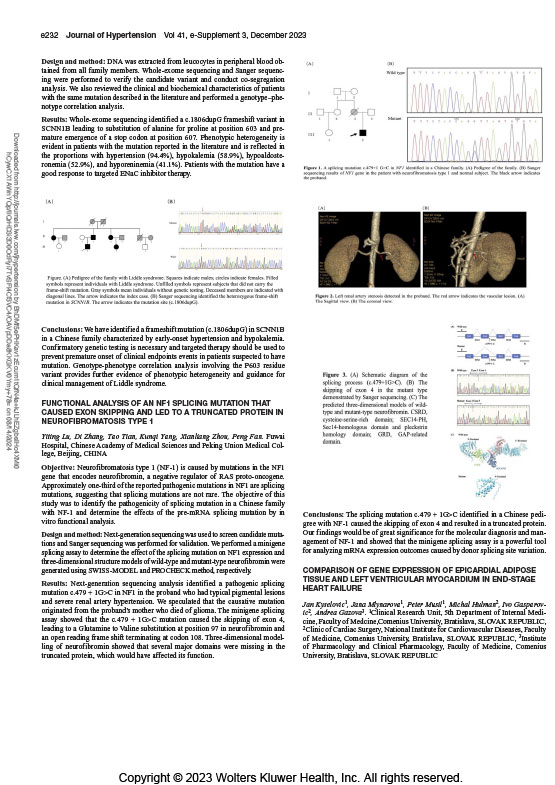Functional Analysis of an Nf1 Splicing Mutation That Caused Exon Skipping and Led to a Truncated Protein in Neurofibromatosis Type 1
June 2023
Abstract
Objective:
Neurofibromatosis type 1 (NF-1) is caused by mutations in the NF1 gene that encodes neurofibromin, a negative regulator of RAS proto-oncogene. Approximately one-third of the reported pathogenic mutations in NF1 are splicing mutations, suggesting that splicing mutations are not rare. The objective of this study was to identify the pathogenicity of splicing mutation in a Chinese family with NF-1 and determine the effects of the pre-mRNA splicing mutation by in vitro functional analysis.
Design and method:
Next-generation sequencing was used to screen candidate mutations and Sanger sequencing was performed for validation. We performed a minigene splicing assay to determine the effect of the splicing mutation on NF1 expression and three-dimensional structure models of wild-type and mutant-type neurofibromin were generated using SWISS-MODEL and PROCHECK method, respectively.
Results:
Next-generation sequencing analysis identified a pathogenic splicing mutation c.479 + 1G>C in NF1 in the proband who had typical pigmental lesions and severe renal artery hypertension. We speculated that the causative mutation originated from the proband's mother who died of glioma. The minigene splicing assay showed that the c.479 + 1G>C mutation caused the skipping of exon 4, leading to a Glutamine to Valine substitution at position 97 in neurofibromin and an open reading frame shift terminating at codon 108. Three-dimensional modelling of neurofibromin showed that several major domains were missing in the truncated protein, which would have affected its function.
Conclusions:
The splicing mutation c.479 + 1G>C identified in a Chinese pedigree with NF-1 caused the skipping of exon 4 and resulted in a truncated protein. Our findings would be of great significance for the molecular diagnosis and management of NF-1 and showed that the minigene splicing assay is a powerful tool for analyzing mRNA expression outcomes caused by donor splicing site variation.

